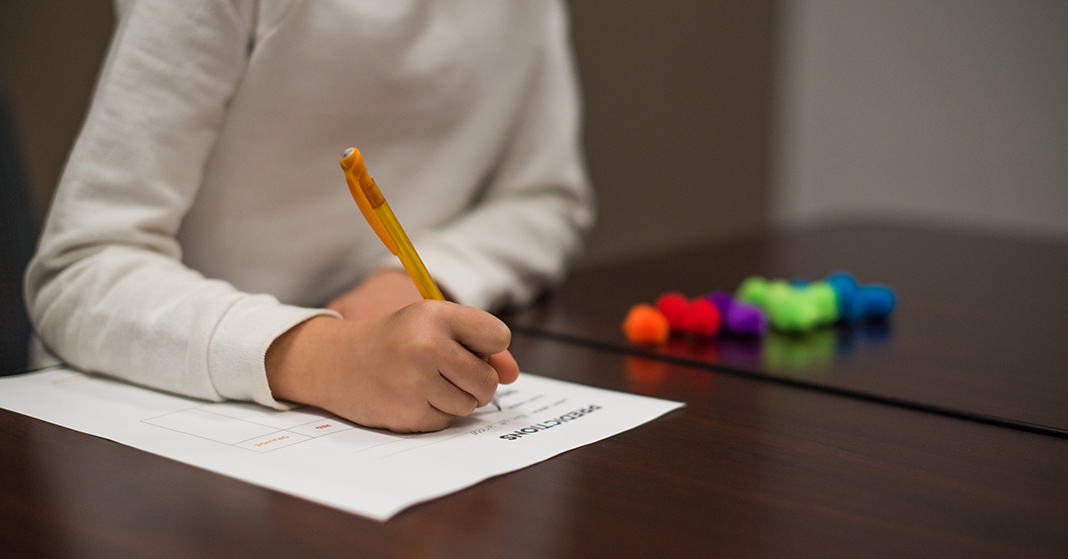
Probability. It’s the reason my kids are required to wear a helmet when riding a bike and a seatbelt when riding in the car. It’s what determines the rate I pay for home and auto insurance and what helps me decide whether it’s worth purchasing an extended warranty for my vehicle. And it’s a challenging concept for an eight-year-old to grasp.
I know because my husband and I tried to explain it when we introduced our third grader to the board game Settlers of Catan. But she didn’t get it. Probability was a brand-new concept for her and, as with all new math concepts, she needed a hands-on activity to help her understand how it works.
Thankfully, Math 3 from BJU Press uses a simple hands-on activity to illustrate the concept of probability.
Materials Needed for This Probability Activity
- Five different colors of pom-poms (blue, green, purple, red, and orange)
- Small opaque bag
- Printout
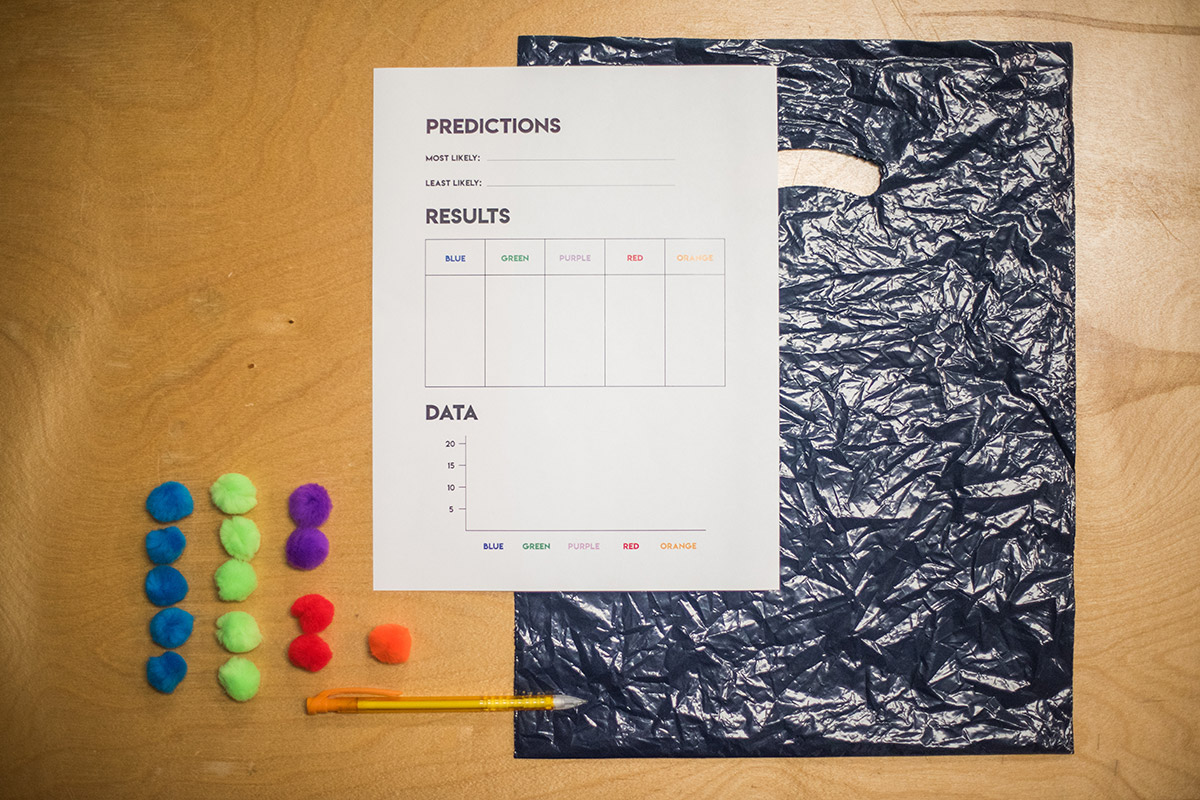 Get Ready for Learning Success
Get Ready for Learning Success
Start by putting pom-poms in the bag (5 blue, 5 green, 2 purple, 2 red, and 1 orange). Explain to your child that the term probability refers to how likely or unlikely something is to happen. Ask him to predict what color pom-poms he will most likely get when he pulls out one. What color(s) is he least likely to pull out?
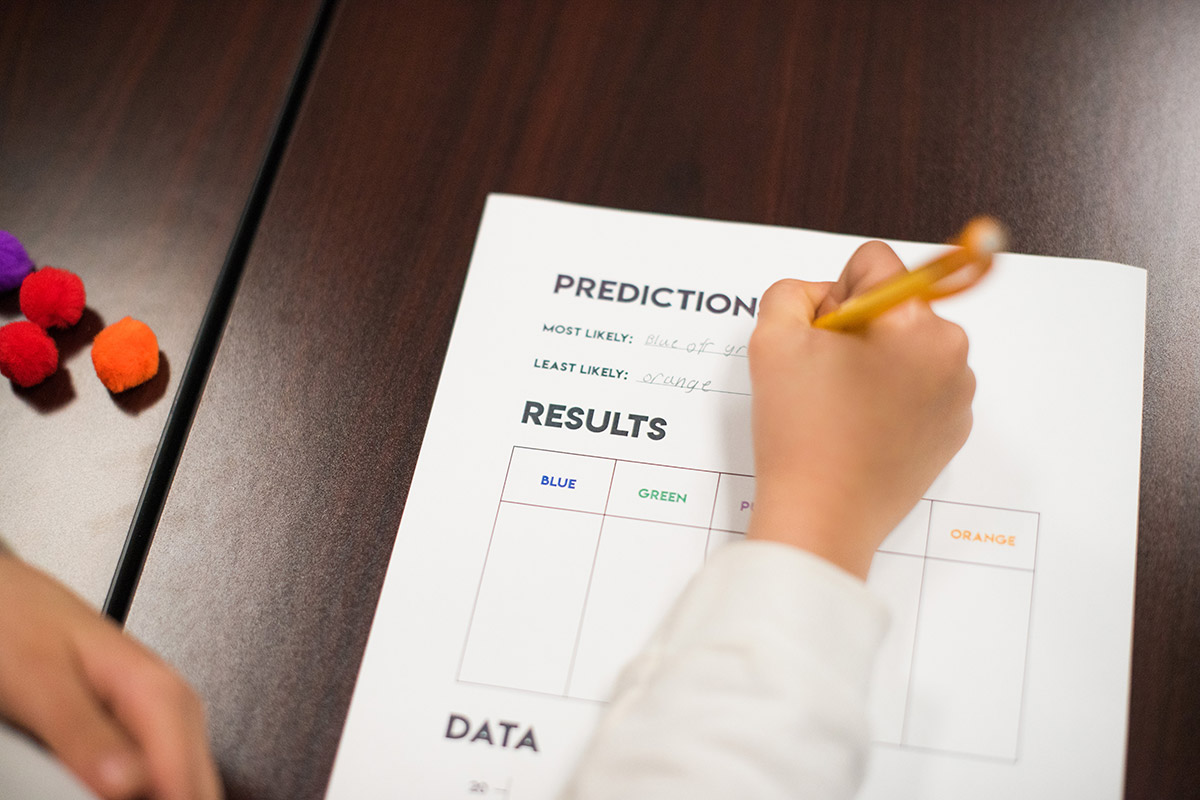 Deepen Understanding Through Discovery
Deepen Understanding Through Discovery
Now, it’s the child’s chance to test out his predictions. Instruct your child to reach into the bag and pull out a pom-pom without looking. Then he should make note of the color by placing a tally mark in the corresponding column on the probability handout before tossing the pom-pom back into the bag. Do this twenty times. (Hint: If you have preschoolers at your house, this is a great activity to get them involved in “school” too. Have them pull out the pom-poms one by one and see if they can name the color.)
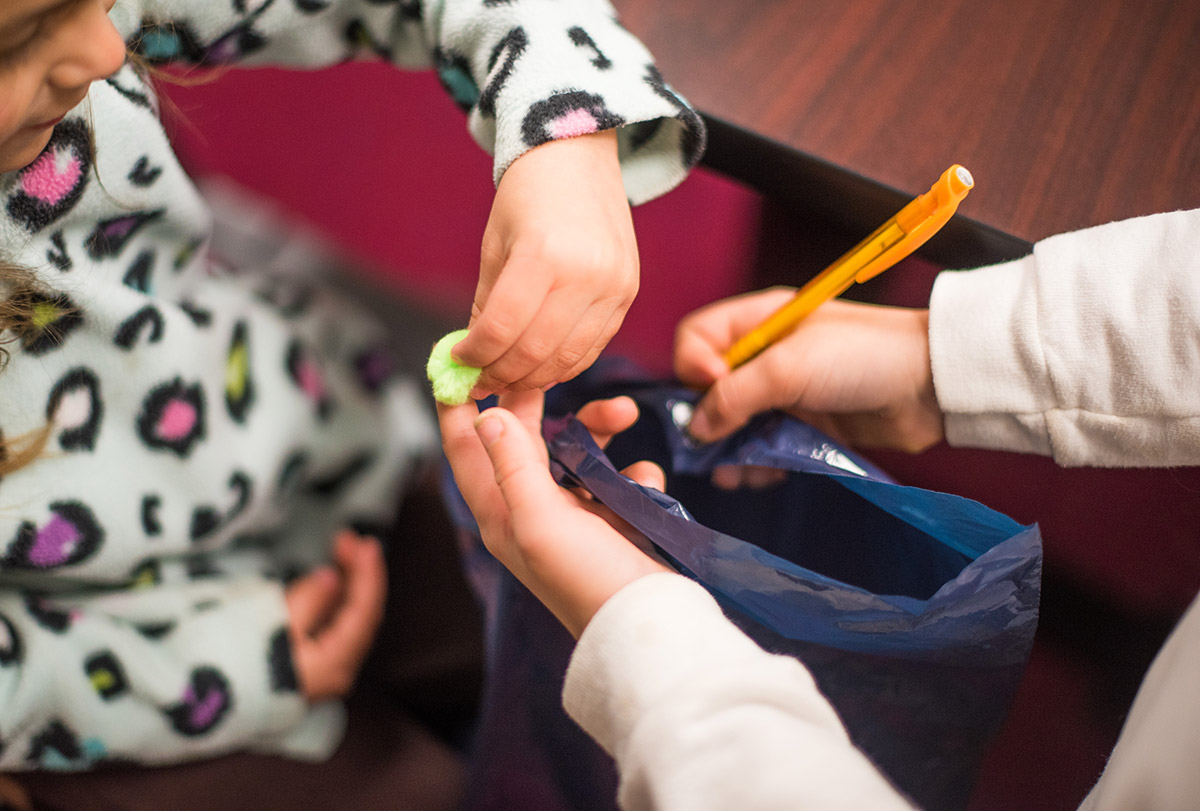 Communicate Results
Communicate Results
Now it’s time to do something with that data. Help your child turn the tally chart into a bar or line graph and report the findings. Did his predictions match the results? Why or why not?
My third grader was so fascinated by this activity that she wanted to do it again. So she did—several times in fact. Each time she used a different mix of pom-pom colors and tried to predict the results. As her understanding grew, so did the accuracy of her predictions. And so did her excitement about learning. It was a great day.
Be sure to check out BJU Press’s Math 3 curriculum, which inspired this activity. You can get ideas for more math activities by clicking on the links below.
Dividing Fractions a Simpler Way
Activity for Simplifying Ratios
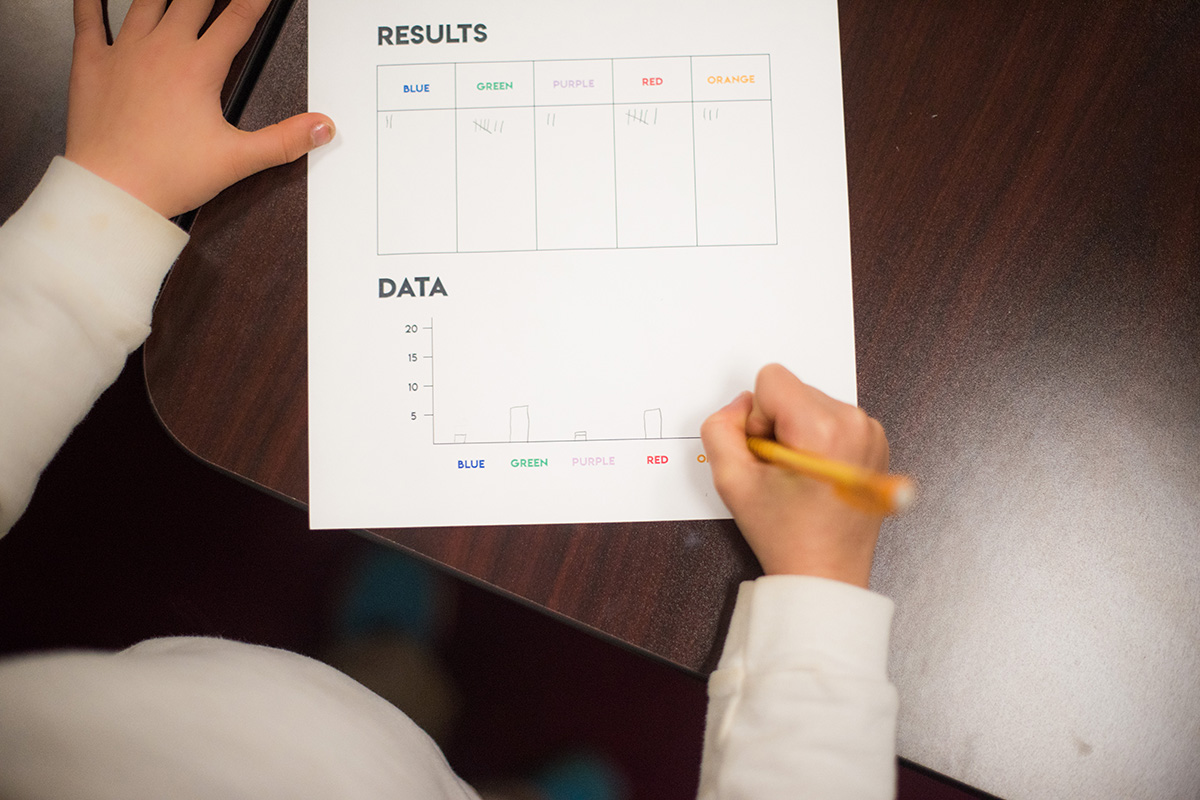
Leave a Reply